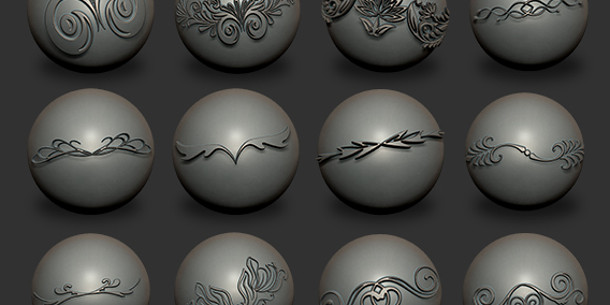Zbrush Alpha Brushes Free Download

Copyright (c) 2019 The MIT License (MIT) Permission is hereby granted, free of charge, to any person obtaining a copy of this software and associated documentation files (the 'Software'), to deal in the Software without restriction, including without limitation the rights to use, copy, modify, merge, publish, distribute, sublicense, and/or sell copies of the Software, and to permit persons to whom the Software is furnished to do so, subject to the following conditions: The above copyright notice and this permission notice shall be included in all copies or substantial portions of the Software. THE SOFTWARE IS PROVIDED 'AS IS', WITHOUT WARRANTY OF ANY KIND, EXPRESS OR IMPLIED, INCLUDING BUT NOT LIMITED TO THE WARRANTIES OF MERCHANTABILITY, FITNESS FOR A PARTICULAR PURPOSE AND NONINFRINGEMENT.
IN NO EVENT SHALL THE AUTHORS OR COPYRIGHT HOLDERS BE LIABLE FOR ANY CLAIM, DAMAGES OR OTHER LIABILITY, WHETHER IN AN ACTION OF CONTRACT, TORT OR OTHERWISE, ARISING FROM, OUT OF OR IN CONNECTION WITH THE SOFTWARE OR THE USE OR OTHER DEALINGS IN THE SOFTWARE.
Welcome to Pixologic's Alpha Library. Pixologic has created a library full of amazing Alpha materials from ZBrush artists who wish to share their work with the ZBrush community. This library gives you one unique location to view, download, and begin sculpting using any of the alphas found in this library. See what ZBrush can do with your alphas. Download 196 further free custom ZBrush brushes from Michael Dunnam's. Tags: A Vintage Journey, alpha, challenge, character, cloth,.
The Alpha 3D Brushes To use Alpha 3D, you must use one of these brushes: Standard, Layer, or the Chisel 3D brush. Upon selecting one of these types of brushes you will see the Mesh Selector on top of the canvas. This lists the available content for the selected brush. Simply pick a VDM of your choice, then click and drag the cursor on your model to sculpt it using the VDM shape stored in the selected brush. Some of the 3D Alpha brushes are set by default to work with the Drag Rectangle stroke. Feel free to change instead to the Freehand or Dot strokes, or even combine it with Lazy Mouse for more control or different results.
 Jonn2 さん 2012年 10月 29日 09時 09分 58秒. Jonn1 さん 2012年 10月 26日 12時 19分 25秒.
Jonn2 さん 2012年 10月 29日 09時 09分 58秒. Jonn1 さん 2012年 10月 26日 12時 19分 25秒.
At the top, some of the VDM’s used on the sphere. Creating a New Alpha 3D Brush Creating your own Alpha 3D brushes is the key to producing advanced models and increasing your productivity. They can be designed to generate highly detailed models or just to produce mid-resolution shapes like an ear that you can refine later. Due to how 3D Alphas work, VDM creation needs to follow some specific steps: • Load one of the Brush3DTemplate projects located in LightBox >> Project >> Brush3DTemplate folder. You have different grids to choose from. To be recognized as a VDM, the model must be sculpted on a grid with square borders.
• Sculpt your shape with the regular ZBrush tools. Since you must maintain a grid structure you won’t be able to use some features like the Slice curve or DynaMesh. • Feel free to use Subdivision surfaces and to push/pull your geometry.
If you notice some stretching you can use the Tool >> Deformation >> Relax Plane Grid function to relax the topology before you continue sculpting. It is advised to use this function when you are at the stage of building the rough silhouette of the VDM. • Once your model has been sculpted you must check that the boundary of your grid is still a square. If not, you can mask everything except the boundaries, then use the Tool >> Deformation >> Morph to Grid slider at 100% to revert the boundaries to a perfect square. • You can follow the above steps as often as you wish to create multiple SubTools, all composed of models sculpted from the various grid base shapes.
• Disable Draw >> Perspective and align the front of the model to the camera by holding the Shift key while rotating. You want to have the grids directly facing the camera.
• Select one of the brush types compatible with Alpha 3D: Standard, Layer, or Chisel3D (which is actually a Layer Brush) and clone it through the Brush >> Clone function. Otherwise the next steps would delete the original Alpha 3D brush content. • Click the Brush >> Create >> Create Multiple Alpha Brush button.
All SubTools will be converted to VDMs and associated with the current brush, replacing the previously stored models. Notice that your Alpha now has a “3D” flag on it. • Note: The SubTool names will be assigned as the VDM names.
• Try your new Alpha 3D brush on some models. If necessary, change the Brush >> Depth settings. • If you feel the need to fix a VDM, you can edit some of the SubTools you had originally created to refine the grid base shapes. Once edited, redo step 8 to rebuild the brush with the updated VDMs. • When you are satisfied with your brush, click Brush >> Save As to save your brush.